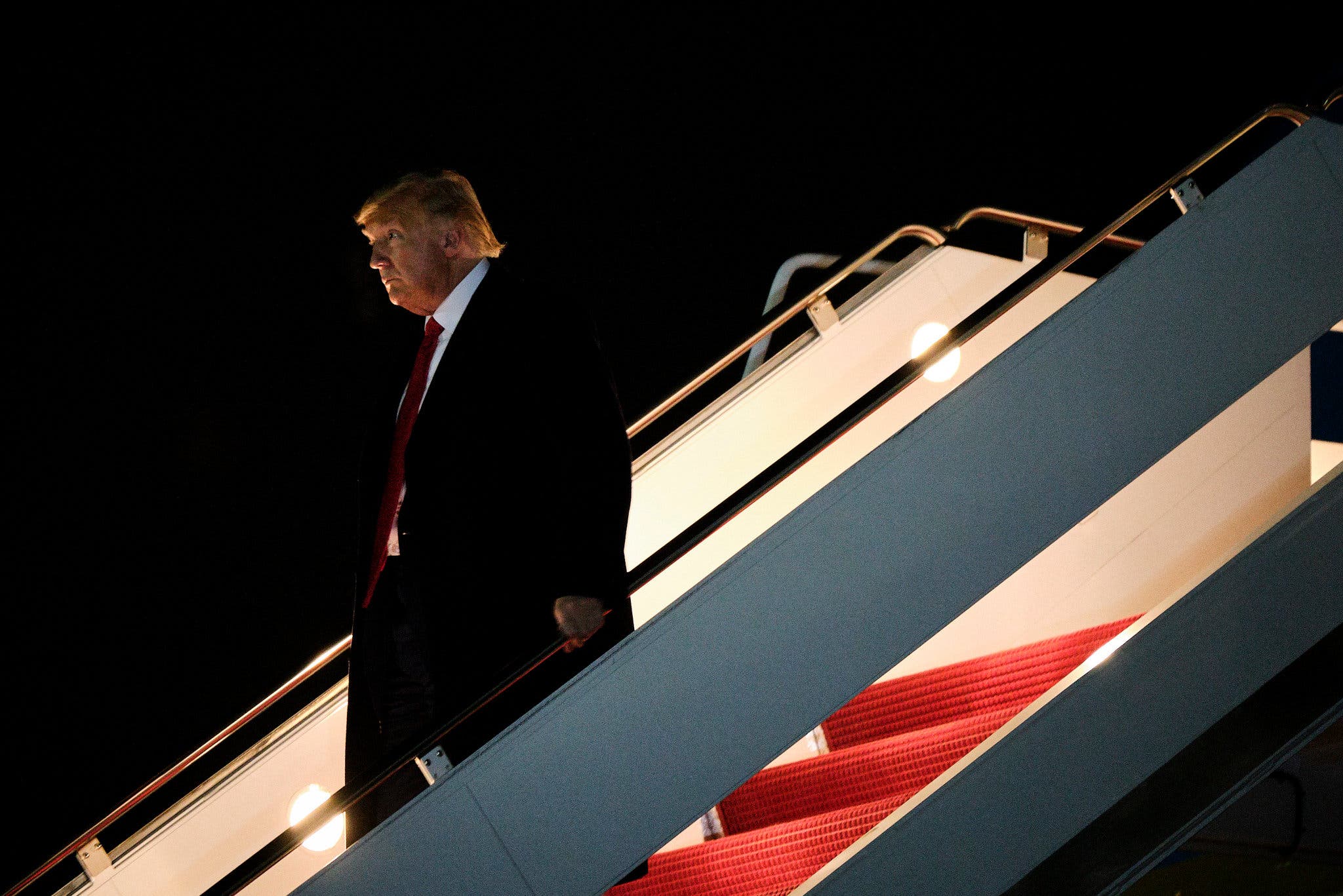Assessing The Effects Of Trump's Tariffs On US Manufacturing

Table of Contents
Short-Term Effects of Tariffs on US Manufacturing
Increased Costs for Businesses
Trump's tariffs immediately increased the cost of imported raw materials and intermediate goods. Industries heavily reliant on imports, such as steel and aluminum manufacturing, experienced significant price hikes. This resulted in:
- Increased production costs: Businesses faced higher expenses for essential inputs, squeezing profit margins.
- Price hikes for consumers: Many manufacturers passed these increased costs onto consumers, leading to inflation in certain sectors.
- Challenges for small and medium-sized manufacturers (SMMs): SMMs, with less financial resilience, struggled disproportionately to absorb these increased costs, leading to some business closures and job losses in certain sectors. The impact on SMMs was particularly acute in industries like textiles and furniture.
The immediate effect on many businesses was a reduction in profitability, forcing difficult choices about pricing, production, and even workforce size.
Initial Job Creation and Investment
Proponents of the tariffs argued that they would stimulate domestic production and job creation. While some sectors did see a short-term increase in domestic production and employment, this often came at a cost.
- Retaliatory tariffs: Other countries imposed retaliatory tariffs on US goods, leading to job losses in export-oriented sectors like agriculture and automotive parts.
- Shifting employment: While some jobs were created in specific sectors benefiting from tariff protection, other jobs were lost in sectors negatively impacted by higher input costs or reduced export opportunities.
- Limited net job growth: The net effect on overall job growth within the manufacturing sector was often marginal, and in some cases even negative, depending on the analysis and the specific time frame considered.
The initial positive job creation numbers often failed to account for the negative job impacts in other areas. The long-term effects on employment proved far more nuanced than initially anticipated.
Long-Term Effects of Tariffs on US Manufacturing
Impact on Global Trade Relationships
Trump's tariffs severely damaged US global trade relationships. The resulting trade disputes disrupted established supply chains and fostered an atmosphere of distrust and reduced international cooperation.
- Reduced international cooperation: The protectionist stance adopted by the US government led to less collaboration on global trade issues and a weakening of international trade organizations.
- Supply chain disruptions: Businesses struggled to source raw materials and components efficiently due to tariffs and retaliatory measures, which resulted in delays and increased costs.
- Decreased global competitiveness: The tariffs created an environment of uncertainty and reduced US manufacturing's global competitiveness by making US-produced goods more expensive in international markets.
The long-term damage to international relationships has been far reaching and likely to continue to affect US trade for many years.
Changes in Production and Investment Strategies
In response to the tariffs and uncertainty, many US manufacturers adjusted their strategies.
- Reshoring and nearshoring: Some companies relocated production facilities back to the US (reshoring) or to nearby countries (nearshoring) to reduce reliance on imports. This often proved costly and did not always lead to the predicted upsurge in domestic manufacturing.
- Supply chain diversification: Businesses actively sought to diversify their supply chains to minimize reliance on single sources of materials and components affected by tariffs. This strategy while necessary, adds complexity and cost.
- Increased automation: To offset increased labor costs, some manufacturers invested more heavily in automation and robotics.
These changes, while potentially beneficial in the long run, have significant short-term economic consequences, and some did not fully offset the negative impacts.
Effects on Innovation and Technological Advancement
The uncertainty caused by the tariffs potentially hampered innovation within the US manufacturing sector.
- Reduced R&D spending: Businesses facing higher costs and reduced market access may have decreased investment in research and development.
- Decreased competition: Tariffs limited competition, potentially stifling innovation by reducing pressure to develop new technologies and improve efficiency.
- Long-term technological disadvantage: The protectionist measures may have negatively impacted the long-term competitiveness of US manufacturing in terms of technological advancements.
The impact on innovation is a subtle but potentially significant aspect of the lasting legacy of the tariffs.
Sector-Specific Analyses: Assessing the Impact Across Different Manufacturing Sub-Sectors
The impact of Trump's tariffs varied considerably across different manufacturing sectors.
- Automobiles: The auto industry was significantly affected, with both increased input costs and retaliatory tariffs impacting sales.
- Textiles: The textile industry experienced both increased costs and challenges in export markets.
- Electronics: The electronics sector, heavily reliant on imported components, faced significant price increases.
These sectoral differences highlight the complexities in evaluating the overall impact of Trump's tariffs on US manufacturing. Each sector reacted differently, necessitating a case-by-case study.
Conclusion: Understanding the Lasting Legacy of Trump's Tariffs on US Manufacturing
The effects of Trump's tariffs on US manufacturing were complex and varied across sectors. While some businesses experienced short-term benefits, many others faced increased costs, reduced competitiveness, and disruptions to their supply chains. The long-term consequences, including damage to global trade relationships and potential setbacks in innovation, remain a subject of ongoing debate and analysis. The overall success or failure of the tariffs in achieving their stated goals is still a matter of considerable economic and political discussion. To understand the full scope of the impact, further research into the specific effects of "Trump's Tariffs on US Manufacturing" is crucial. Consult government reports, academic studies, and industry analyses to form your own informed opinion on this complex issue.

Featured Posts
-
 Is Nike Headed For Its Worst Revenue In Five Years
May 06, 2025
Is Nike Headed For Its Worst Revenue In Five Years
May 06, 2025 -
 Gregg Popovich Le Plus Grand Total De Victoires En Saison Reguliere Decrypte
May 06, 2025
Gregg Popovich Le Plus Grand Total De Victoires En Saison Reguliere Decrypte
May 06, 2025 -
 Rianna U Vidvertiy Fotosesiyi V Rozhevomu Merezhivi
May 06, 2025
Rianna U Vidvertiy Fotosesiyi V Rozhevomu Merezhivi
May 06, 2025 -
 Celtics Vs Knicks Game Free Live Stream Options And Tv Channels
May 06, 2025
Celtics Vs Knicks Game Free Live Stream Options And Tv Channels
May 06, 2025 -
 Rihanna And A Ap Rocky Relationship Timeline And Speculation
May 06, 2025
Rihanna And A Ap Rocky Relationship Timeline And Speculation
May 06, 2025
